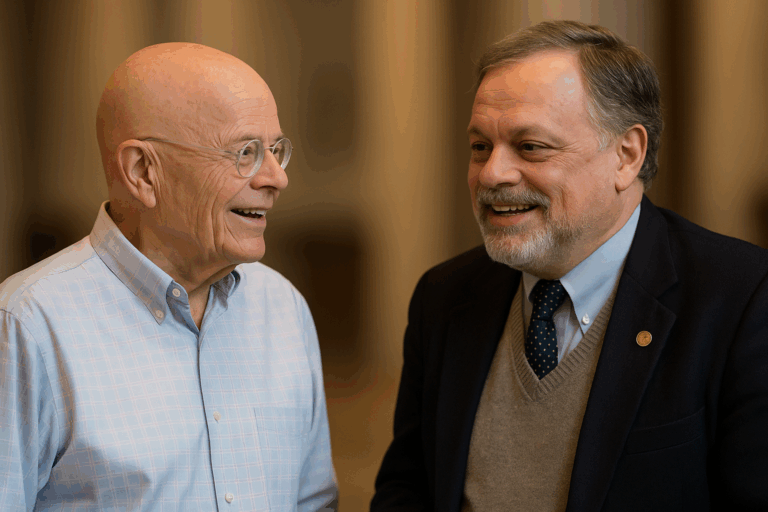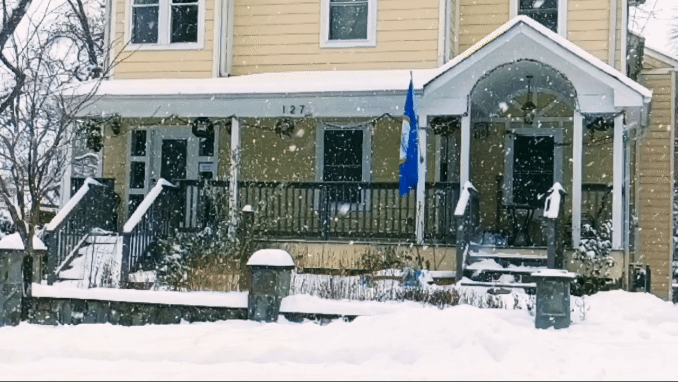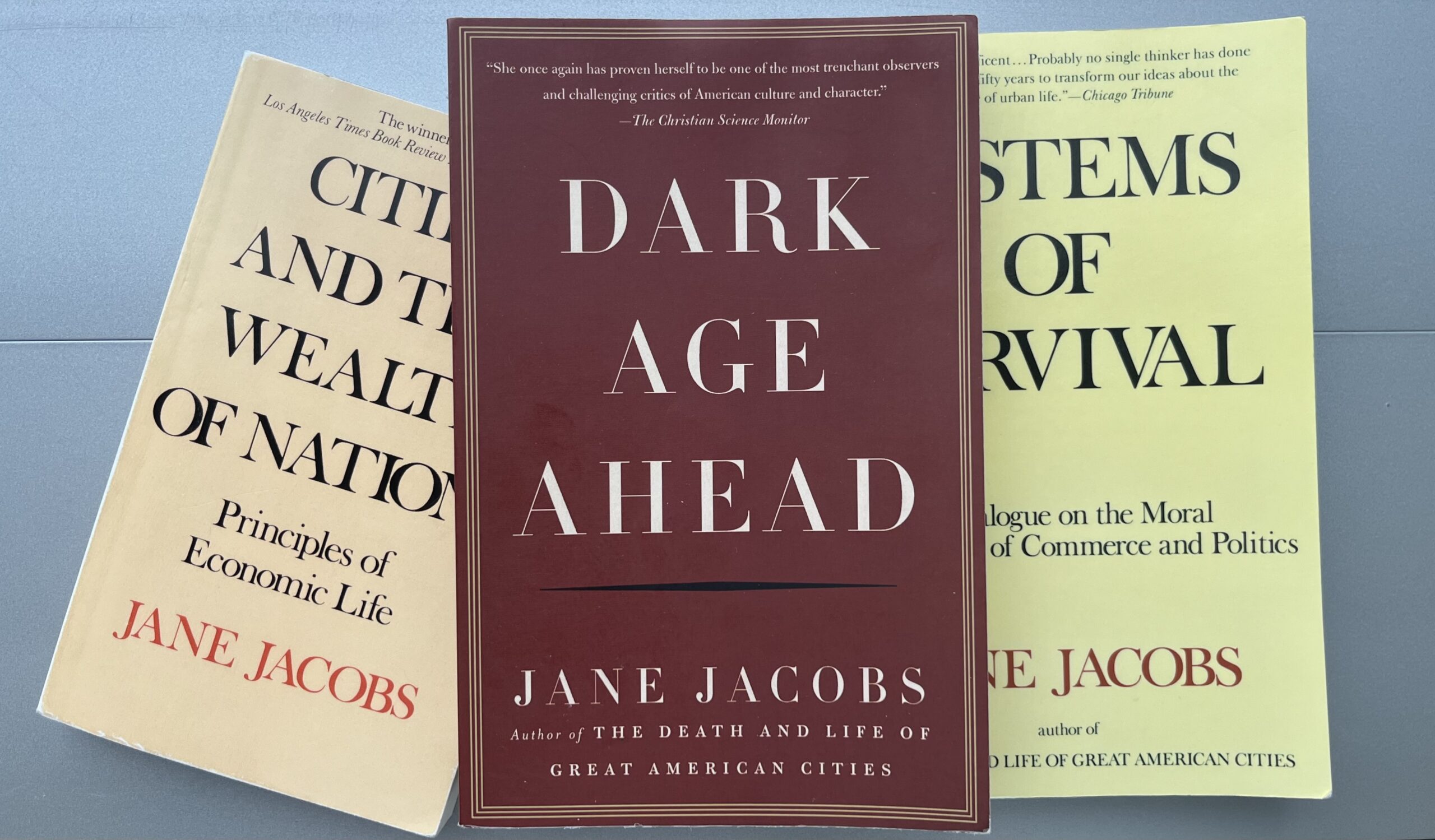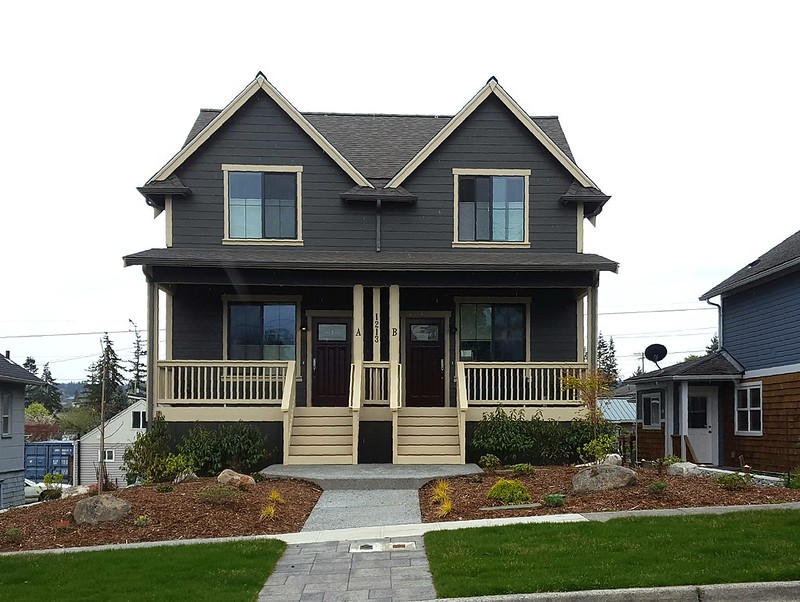Physical Address
304 North Cardinal St.
Dorchester Center, MA 02124
Physical Address
304 North Cardinal St.
Dorchester Center, MA 02124

In my day job, I suggested the name “Urbanity” for the research project that Emily Hamilton and I co-lead. I wasn’t sure about it myself, but it stuck. The noun urbanity, of course, refers both to the quality of being…

Snowfall reveals a curiosity of the commons and - Alan Cole claims - something about the character of urban progressives.

Jane Jacobs wasn’t optimistic about the future of civilisation. ‘We show signs of rushing headlong into a Dark Age,’ she declares in Dark Age Ahead, her final book published in 2004. She evidences a breakdown in family and civic life, universities which focus more on credentialling than on actually imbuing knowledge in its participants, broken feedback mechanisms in government and business, and the abandonment of science in favour of ‘pseudo-scientific’ methods. Jacobs’ prose is, as always, rich, convincing and successful in making the reader see the importance of her claims. Yet the argument that we are spiralling into a new Dark Age, similar to that which followed the fall of the Roman Empire, is not quite complete and I remain unconvinced that the areas she identified point towards collapse as opposed to merely things we could, and should, work to improve. Let us start with the idea that families are ‘rigged to fail,’ as she puts it in chapter two. Jacobs, urbanist at heart, cites ‘inhumanely long car commutes’ stemming from the disbanding of urban transit systems, rising housing costs, and a breakdown in ‘community resources’ – the result of increasingly low-dense forms of urban development – as a significant reason why families are now set up for failure. She suggests our days are filled with increasingly vacuous activities, leading to the rise of ‘sitcom families’ which ‘can and do fill isolated hours’ at the expense of ‘live friends.’ That phenomenon has now been replaced by the ‘smartphone family’ where time spent on TikTok, and consuming other forms of digital media have supplanted the ‘sitcom’ family of the past. There has been significant literature on the detrimental effects of digital technologies to our physical and mental health, not least in Jonathan Haidt’s most recent book, The Anxious Generation. A similar picture is painted by Timothy Carney in […]

Are there diverse places in the U.S. where racial differences among residents are small enough to be undetectable to a typical resident? Places where Roger Starr's ideal of "integration without tears" might be a reality, where people of different races socialize as equals, share culture and priorities, and work in the same range of occupations?

After over a century, Berkeley, California may be about to legalize missing middle housing – and it’s not alone. Bids to re-legalize gradual densification in the form of duplexes, triplexes, fourplexes, and the like have begun to pick up steam over the last several years. In 2019, Oregon legalized these housing types statewide while Minneapolis did the same at the city level. In 2020, Virginia and Maryland both tried to pass similar legislation, though they ultimately failed. This year, though, Montana and California may pick up the torch with their own state bills (even while the cities of Sacramento and South San Francisco consider liberalizing unilaterally alongside Berkeley). Allowing gradual densification is an absolutely necessary step towards general affordability. Supply, demand, and price form an iron triangle–the more responsive we can make supply to demand, the less price will spike to make up the difference.* What I really want to focus on here, though, is less about policy and more about political economy. I believe allowing medium-intensity residential development could make additional reforms easier to achieve and change views around development going into the future. We Love What We Know More often than not, I think a generalized status quo bias explains a lot of NIMBYism. Homeowners are most comfortable with their neighborhoods as they are now and are accustomed to the idea that they have the right to veto any substantial changes. Legalizing forms of incrementally more intense development could re-anchor homeowners on gradual change and development as the norm. The first part of the story is about generational turnover. If the individuals buying homes today–and the cohorts that follow–are exposed to gradually densifying neighborhoods in their day-to-day, they’ll anchor on that as what’s normal and therefore acceptable. Moreover, if we’re debating whether to rezone an area for mid-rise […]

Welcome to Twin Peaks: home of black coffee, cherry pie, murder, intrigue, and the endangered pine weasel. To kick off season two of Pop Culture Urbanism, I dive into David Lynch’s eccentric nightmare/daytime soap opera world to examine the age old trope of the bad guy developer and how they manipulate environmental regulation to their financial advantage. Video goes live at noon PT 1/28! Be sure to follow future episodes by subscribing to the Pacific Legal Foundation on YouTube! We have a lot of content in the hopper that you won’t want to miss. For the New Urbs article that inspired this video, click here.

You might think the North Pole is the most magical place on earth. But behind the magic, our deep dive into the history of Christmas movies reveals that there’s more to it than that. In our firstPop Culture Urbanism holiday special, I explore the urban planning behind the North Pole. Be sure to follow future episodes by subscribing to the Pacific Legal Foundation on YouTube! We have a lot of content in the hopper that you won’t want to miss.

If there’s one thing that unites TV and film since the fifties, it’s the archetype of the dastardly developer – forever destroying homes and hiking rents. But it wasn’t always this way. Where did this trope come from, and is it true? This week on Pop Culture Urbanism, I dig into the cronyism and red tape that turned developers into Hollywood’s favorite villain. Be sure to follow future episodes by subscribing to the Pacific Legal Foundation on YouTube! We have a lot of content in the hopper that you won’t want to miss.

Has the Water Tribe gone full NIMBY? Can Avatar Aang overcome his angry impulse to preserve? Why is Ba Sing Se so segregated? And what can we learn from the success of Republic City? In this week’s episode of Pop Culture Urbanism, we explore the trade-offs and complications that every growing city has to deal with, including fictional cities of Avatar: The Last Airbender. Be sure to follow future episodes by subscribing to the Pacific Legal Foundation on YouTube! We have a lot of content in the hopper that you won’t want to miss.

Nolan Gray plunges into the Sam Raimi "Spider-Man" trilogy to uncover the housing problems (and solutions) of expensive cities like New York.